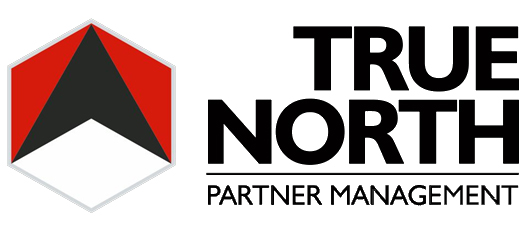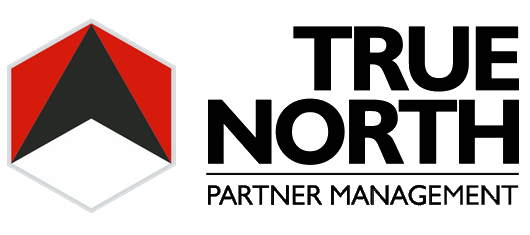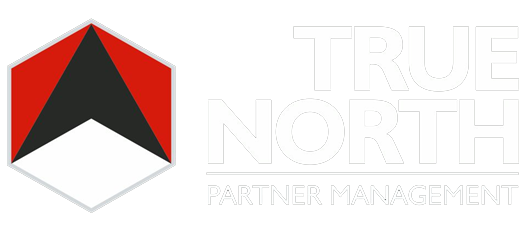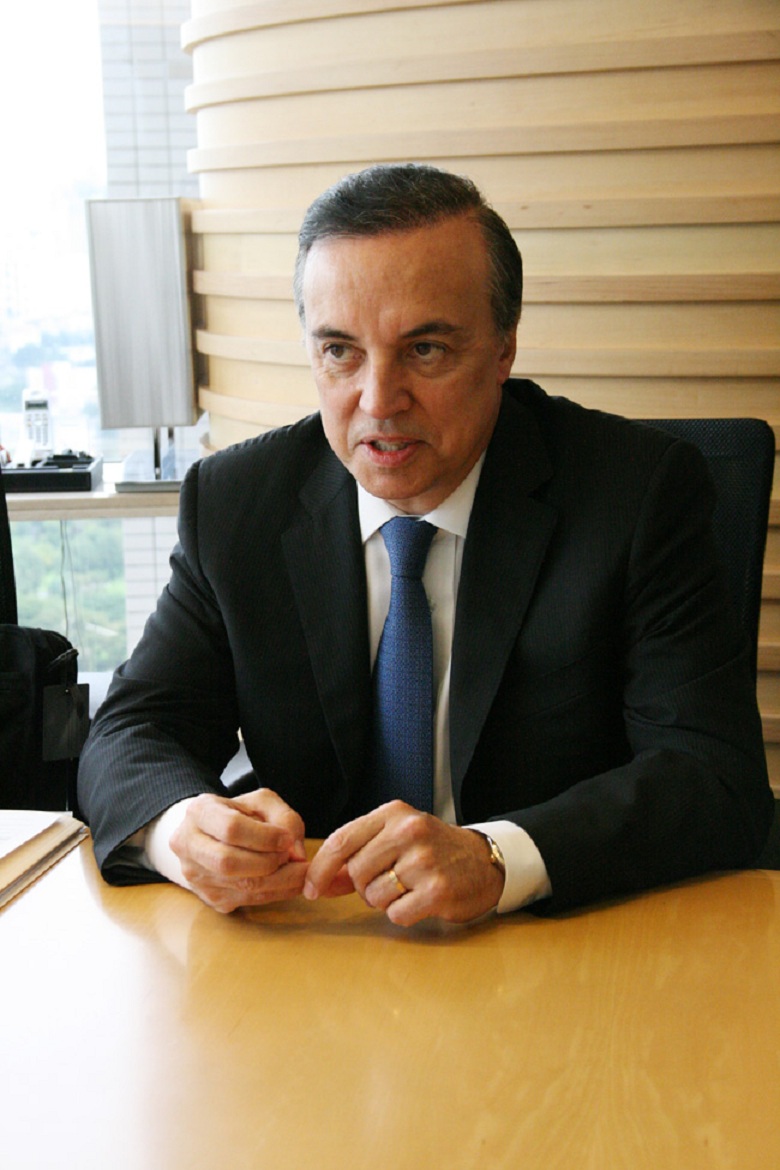The following post originally appeared on Forbes | December 1, 2014
The Handbook Of Mergers & Acquisitions provides a distilled and succinct evaluation of the paths and forces that shaped some of the world’s largest professional service firms (PSFs)—now known as The Big Four. In it, the authors seek to understand the nature of the PSFs’ explosive growth:
We note the effect of forces for globalization and transnational growth, which have opened up new international markets, resulting in more complex financial markets and the rise of a new generation of knowledge- and technology-intensive industries. In the face of such changes, the very largest PSFs have had to adapt, growing rapidly in both the scale and scope of services they offer, in order to keep pace with the clients’ demands.
A typology is offered regarding the rationales behind their expansion behavior, including the need for global reach to service international clients, the need to remain in the “Big League,” access to capital, capability insurance, and more.
Though the chapter regards merger behavior in particular, it is easy to see how their logic transfers to organic growth, too. And while BigLaw hasn’t reached the critical mass of the more generalized consulting world, there are too many parallels between the two brothers to turn a blind eye.
Viewing the legal industry through this lens, few major firms more closely mirror The Big Four’s appetite for expansion than Baker & McKenzie. Under the guidance of their Chairman, Eduardo Leite, they have opened 10 offices and orchestrated the fastest expansion in the firm’s 65-year history, winning the Financial Times’s heavyweight title: The World’s Largest Law Firm by Revenues.
The firm’s performance and strong positioning on the global front during Leite’s tenure have earned him another 2 years at the helm and a permanent position in their history books. With such a strong push toward global footprints in today’s legal market, I wanted to explore Leite’s perception of the market, where he thinks things are headed, and gain, perhaps, a glimpse into the strategies that brought Baker & McKenzie here. See our exchange below:
On The Most Globally-Oriented Markets
Parnell: Can we talk about the markets that you see as being the primary consumers of truly global representation? Not simply international representation, but markets that really need a massive footprint. Could you talk to me about that?
Leite: Sure. We’re seeing a good uptick in growth in transactional practices: M&A, banking and finance, and project finance, too. Although it’s not a rebound—a full rebound—from what it was before the Global Financial Crisis, it’s a very clear upward trend.
Companies are cash rich in general, and they are looking to enhance their position right now with new technology or by expanding to new markets. That makes the M&A sector more active; although, it is focused primarily on very strategic and selective acquisitions, or mergers, or asset disposals.
The other area where we’ve seen an increase in demand for our services around the globe is dispute resolution. For us, this includes international arbitration, compliance, and investigations. Those are areas that have grown considerably in the past twelve months.
Cyber Crime has been a significant concern for clients for some years now, keeping our cyber security practice very, very busy. We’re trying to replicate the model that we had for our compliance and investigations practices: We started many years ago with a team out of Washington, which has expanded, and today we are very successful in places like Russia, Brazil, and China
The regulated areas are growing considerably, too. All major financial institutions are being challenged by the regulatory changes and constant oversight and relationships with the regulators, whether it’s new regulations for the U.S. or elsewhere. We’re also seeing similar regulatory pressures in sectors like food and pharmaceuticals.
In terms of industry sectors, we’ve focused a lot on IT, pharmaceuticals, energy, mining and infrastructure, and financial institutions, of course. We’ve seen a good deal of work coming from the technology sector, in particular; if the legal industry is changing, that sector is changing a thousand times faster. There have been several dramatic developments in recent months: Clients buying and selling divisions, focusing more on their strategy and areas where they are best suited.
Turning to energy, mining, and infrastructure: We have done a lot to invest in jurisdictions that are resource-rich in emerging and developed markets, from South Africa to Canada, and Australia to Peru. We are connecting the dots of all those natural resource-rich countries, and other energy-rich countries, too. Oil and gas is a sector which has proved to be buoyant. In the U.S., shale gas, of course, is a tremendous area for growth. Looking ahead, we’re hopeful that the energy reforms in Mexico will lead to clients making more investments in that country.
In terms of geographic distribution of the growth, among the highlights we’ve seen in the last twelve months is significant demand in Latin America. But we try to look at the long-term evolution of business and the interest from our clients. China, even if it’s experiencing 7% growth per year compared to the exponential growth of the past, is a jurisdiction that we will continue to invest in because we see a huge potential for continued growth in China and elsewhere.
Our Practice In Asia Pacific
Parnell: Sure. China, in particular, is a bit of a black box. There’s a ton of work there, but I see that it’s been difficult to establish profitable offices for many. I’m not sure if you guys are seeing the same thing?
Leite: We’ve seen that happening to some of our competitors. Some of them, while not withdrawing from Asia Pacific, are really reducing their operations. We’re in a different place. First, because we’ve been in the region since 1963; we opened in Manila in ’63. We’ve been in Tokyo since 1972, in Hong Kong since 1974. As far as China goes, we’re lucky enough to have a pool of local Chinese partners who have roots in the community and understand the issues and how they need to be dealt with in China. At the same time, they were educated, say, in Georgetown or New York University, so they have a strong grounding in international standards as well as the local roots, which are essential in China. That gives us a bit of an advantage, and luckily we’ve been profitable in China. But it’s a tough market.
There’s a strong connection between China and with other emerging markets. For example, a trend that we see growing is the Chinese investing, say, in South America. We can help the clients on both ends. Someone manages the relationship out of Beijing, and we do the work out in Buenos Aires and Lima, for instance. So that’s the beauty of being so diverse and having a footprint that is so broad.
On Ensuring Consistency Across The Globe
Parnell: Let’s talk about seamlessness, transparency. How do you ensure this? With such a massive footprint, it has to be challenging.
Leite: First of all, encouraging mobility of our people is key for seamless service, a seamless culture, and seamless management and leadership. We move a lot of our people from the very early days of their careers. For example, in 1980 I was up in Chicago for a year or so during my training days, and then I went back to Brazil.
We finance and help with scholarships, especially for our civil law lawyers to study in common law countries like the U.S. And that also helps a lot to get better quality worldwide. There are issues of legal education in some emerging countries, that, even if you go to the best schools, you don’t get the quality that you might get in Germany and the UK, or the U.S. So we invest a lot in that, too.
We are very global in everything we do. As an example, we have a quality audit program where we have a group of managing partners or practice leaders that visit offices and countries, or groups of offices, and they review the quality of their work. That’s extremely helpful, and it cuts both ways: For those who visit the office and look at everything from the processes to the environment to the quality of the systems and everything else, it’s good for the office. It’s also good for those who do the audit: they learn a lot.
That takes me to another resource, which is creating a pool of global leaders. I think the key in a law firm of our size is to have partners who are truly global leaders who can make the connection between the best of the emerging world with the best of the developed world. It’s not easy to build that. Many of our competitors still appear to be either very North American, or very Japanese, or very German, and they have a hard time in being global—being so expansive around the globe—when they still have one predominant culture. The origins of Baker & McKenzie are in Chicago, but we enjoy and appreciate our “globality.” We instill that in our young attorneys and in our staff, so that in the end, we are more seamless in the way we think, the way we act, and the way we behave for our clients.
There are many other things, too. All the practice areas are managed centrally by a global committee of each practice group. The same goes for industry focus groups. We have organized global client teams for our top 50 key clients, and we have a second group of top clients of 200 more. For those global clients we have dedicated teams that are made up of people from different offices, practices, and different countries, depending on what our clients’ needs are. They’re led by a group of partners, as small as possible, 3 or 4 partners. That helps us, also, to create the seamless service that our clients expect.
It’s a lot easier to be one firm in one city where everybody knows each other. When you reach our size, our scale, it’s always a challenge. But it can be done, and when you do it, when you reach that stage, it is so powerful that the ability to compete is incredible. So it’s worth the challenge.
On The Consolidating Market
Parnell: If you could, talk to me about your thoughts on the consolidation of the market. It’s very, very heavy right now. As the market pushes on, some seem to be a bit more strategic than others, some maybe out of desperation, we’re not sure. What are your thoughts on this? Do you think it is good for the market? Where do you think this is taking us?
Leite: I believe that the industry is polarizing to some extent. We see a group of very large, international or global firms, and others who are becoming more boutiques, and others, more regional, but with a strong and valuable offering, too. Those in the middle who don’t really know exactly what their value proposition is, what the clients look for in them, are going to be crunched. And I think they are already feeling that.
I appreciate that in the United States, this is very evident. Maybe in other countries, this isn’t so. Australia is another country where you can see evidence of that dynamic and that led to some mergers, some combinations in that market. Worldwide it will continue, I think, until we see what some predict is going to be the “Global Elite” of 10 leading firms. I think the trends are showing that this is probably the future.
On Learning From Clients
Parnell: While you do have peers in the market, being the largest firm and with the highest revenue, there really aren’t any predecessors—at least in law—that you can pull lessons from as you continue on your own evolution. Where are you gleaning lessons from?
Leite: I always tell the partners, “We need to learn from our clients.” I think a good analogy is perhaps in what we have seen in the automotive industry: How the plant owners now work together with the auto part manufacturers. In a moment of crisis, they reached a point where they needed to work together and discuss their margins, their just-in-time lean management, continuous improvement, and so on. They plan ahead, together, so that there are no surprises. Clients, which are the vehicle plant owners, have predictability on the future because they know the market: Whether China is buying more, or the future is in Europe, for example.
So the part manufacturers and plant owners trust each other and they work with smaller margins. But they’re still as efficient and profitable, and survive. The industry has gone from improvement to improvement all the time. I think professional service firms, one day, will get to that. When the buyers’ market continues as it is, we are going to have to adjust. And the learning comes from our own clients.
On The Evolution Of The Legal Consumer
Parnell: Speaking of the automakers, let’s talk about legal consumers. How do you see them evolving over the next 10 or 15 years?
Leite: The trend of general counsel looking at their law firms with a very different way of valuing what we provide will continue. It’s the old saying: “Faster, better, cheaper.”
When they want faster, they want responsiveness to their commercial needs. So we’ve been training our lawyers on the commerciality of our advice. It’s hard enough to give the right legal advice, the right answer. But it also needs to be commercially sound at the same time.
The other area is price, of course: value for money and better quality. Legal departments are growing and taking a good deal of the work that they usually outsource to law firms. That puts a challenge on us to give them what they are not able to do, or don’t want to do, in-house. Generally, that tends to be the more complex or more specialized areas.
The other area that is a challenge for us and is changing the in-house counsels is that they are closer and closer to the core business. General counsel, today, is practically part of the C-suite. That makes the gap between outside counsel and in-house counsel even greater. Because we are not in the factory, we’re not seeing the new products being developed, and we don’t know how the chief financial officer thinks and what the internal impact might be of many of the things that happen in the corporate life. So we’re going to have to bridge that gap if we want to compete to be in their panel, if we want to continue to be their firm of choice, and that’s investing in client relationship management, account management.
Learning, again, from other industries: We’re going to have to learn from the consultants, from the hotel industry, from the airlines, and from the banks. Nowadays they show great innovation in how they manage their account holders while too many lawyers seem to still operate like the old days when we just used to write legal opinions and that was it.
On The Shifting Leverage Pyramid
Parnell: Interesting. So it’s almost as if there is a growing chasm—an asymmetry of information—where the advantage is shifting away from the law firms and into the favor of the general counsel. Where it previously favored the law firms because it was very difficult to assess the actual value of legal work, because the general counsel has been brought into the fold of the executive suite, they have considerably more inside knowledge and insight—where the corporate entity is concerned—and are potentially more business savvy than outside counsel.
Speaking of savvy in-house counsel, can we talk about disaggregation? Outsourcing?
Leite: David Maister said 25 years ago that lawyers don’t understand or appreciate project management. Well, we do now. And we’re putting professional project managers with our client teams.
We do know how to predict how much are we spending, and on what. What’s in scope? What’s not? Pitching is another area of improvement. Pricing, also. Today, at Baker & McKenzie, we have a global director of pricing because it’s become so key in servicing clients.
Now, those firms that are picking up the more commoditized or repetitive work—from document review to filings and so forth—in time they will try to move up the value chain, get to the middle, or other tiers of the market. They have scale, they are growing fast and they’re learning fast. We also need to learn from them and respect them. It’s a difficult subject, but I don’t think that we can ignore it or believe this is temporary or that it’s going to go away.
What we are doing is applying techniques, like lean six sigma, and continuous improvement in our service centers, like the one we’ve had in Manila for 14 years now—it’s a group, today, of 700 people supporting our global firm. Also, we just opened a new center in Belfast, which makes sense because of time zones, and is going to give us more legal support.
On Growth In The New Markets
Parnell: Along the same lines of disaggregation, in my mind, I see it being difficult for firms to grow in the way they have in the past. How do you see disaggregation impacting the way that you guys are growing or choosing geographies in which to have a footprint?
Leite: Well, I think the dilemma that you’re posing is serious for very large firms with a large head office—very highly concentrated in London or New York or elsewhere. But for a firm like ours—only approximately 25% of our lawyers are in North America; we have approximately 400 fee earners in London—we are split pretty evenly, 1/3 by region: Europe and Africa is one; North and South America is another one; and the other is Asia-Pacific. We just opened our 77th office and we’re in 47 countries, so in terms of geographic footprint it’s pretty comprehensive, much like many of our clients.
So for a firm like ours, disaggregation is a different reality. We believe we have a market leading position in the provision of the efficient delivery of legal services to our clients. A major part of this is through the use of our global service centers in Manila and now Belfast.
On A Future-Proof Skillset
Parnell: Looking out over the next 10 years, what kind of skillsets will a super-lawyer embody? How can someone really maximize their potential as the market evolves?
Leite: I usually tell our young attorneys that they need to look at their careers in “3D.” One is that they need to be very good in, and like one area of, the law; let’s say corporate or IP, for example. Second, they need to learn and understand a specific industry, where they can say “I do understand the energy industry,” or “I do understand the power industry.” Why? Because that’s what clients expect. Corporate clients expect you to understand their industry very well, to speak their language. When you do, that is a tremendous advantage. And the third is client relationship skills. Just doing the legal work is not enough. You have to try, always, to become the trusted advisor. Turn the relationship with your client into some sort of friendship, or as close as you can get.
Again, this takes us back to learning from the client: How do we learn from those clients who are so much more developed in terms of client relationship management? Listening to the customer, anticipating what the customer’s going to ask, that’s a tremendous skill that requires a different type of attorney than what today’s law schools are producing.
Also, I see many attorneys becoming very successful because they have dual careers. Someone in our environmental practice that is a bio-chemist, or someone with a JD and an MBA together—it’s a beautiful combination.
In terms of personal qualities, I think the attorney of the future needs to be a very strong team player. When I started my career in 1978, much of my job was as a sole operator. That approach has now disappeared. We need to understand how to work and organize ourselves in small teams where each one in the team knows what their role is. Teams have a hierarchy. Teams have a way of engaging and rules of engaging that are very clear. That’s what we’re trying to build in Baker & McKenzie.
On The Not-So-Obvious Challenges Of Managing A Global Firm
Parnell: I find this to be a question of interest to some of the people that I talk to. What are some of the not so obvious challenges for someone in your position?
Leite: Cultural sensitivity—this is key. I have to put myself in the shoes of attorneys from all around the world, and empathy is key in this position. You have to be sensitive to that in order to inspire, to lead, or resolve conflict, or to resolve situations. That was not in my job description.
The other is keeping up to date with what’s happening. Our clients are probably facing more dramatic competition and challenges than we are facing. As well as the pace and complexity of innovation and new competitors in their own sectors, there is a backdrop of geopolitical issues and environmental problems that pose significant challenges for even the best-prepared organization. And at the same time you have to have a wide appreciation of the latest developments in our industry, which, as we’ve discussed, is at an exciting and competitive time right now.
Email: dparnell@davidjparnell.com Twitter: @davidjparnell
Books: The Failing Law Firm: Symptoms And Remedies; In-House: A Lawyer’s Guide To Getting A Corporate Legal Position



